Leica Q2 review: an artful composition
The premium compact Leica is a cut above the competition
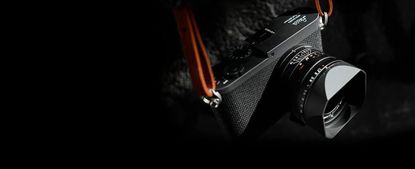
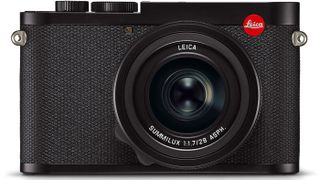
Leica’s Q2 is, at first glance, an odd beast. Handsome, of course - the minimalist design and matt-black finish are Leica through-and-through - but the spec sheet is somewhat puzzling.
In an era when even camera phones are offering powerful zooms, why build a camera with a single lens and a fixed focal length? Why build a compact camera at all, in fact, let alone one selling for well over £4,000?
Yet, as the name suggests, the Q2 is a sequel. Its predecessor, which had a similarly restricted format, was evidently a success worth replicating. And for all its idiosyncrasies, the Q2 is a delight to use, with an ultra-fast lens and advanced sensor that produce ethereally beautiful images.
Subscribe to The Week
Escape your echo chamber. Get the facts behind the news, plus analysis from multiple perspectives.

Sign up for The Week's Free Newsletters
From our morning news briefing to a weekly Good News Newsletter, get the best of The Week delivered directly to your inbox.
From our morning news briefing to a weekly Good News Newsletter, get the best of The Week delivered directly to your inbox.

Headline specifications
The 28mm lens is, arguably, an un-Leica-like compromise. It’s not quite wide enough to be a true landscape specialist, but a little too wide for portraiture. It is, however, excellent for travel and street photography.
In any case, the huge, 47-megapixel sensor provides some leeway with that fixed focal length. Setting the digital zoom to 50mm (or cropping the photo afterwards, which amounts to the same thing), will leave you with a 14.6-megapixel image - plenty for most purposes.
What really sets it apart, though, is the unusually wide f/1.7 aperture, which crisply separates subject and background. Combined with optical image stabilisation and an ISO rating that can be pushed to 50,000, it also lets you capture usable images in the murkiest conditions.
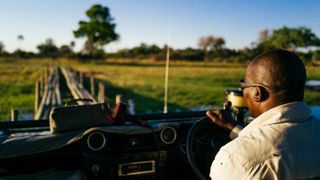
Design and usability
The Leica Q2 is compact and light, but its weatherproofed magnesium finish feels rugged. A built-in lens hood provides additional protection. The controls are robust, precise and satisfying to use, as you would expect from a Leica.
Given the relative simplicity of the camera, it has no shortage of dials and switches. The lens barrel has two control rings, one for focusing and the other for selecting aperture width, while a dial on top controls the shutter speed. All three can be set to auto.
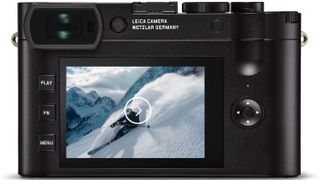
A thumb dial behind the shutter button can be customised, but defaults to exposure compensation, while a stubby little joystick below it selects the autofocus point, scrolls through images on the touchscreen display and navigates less frequently used settings in the digital menus. The interface quickly feels intuitive: after initial set-up, you will rarely have to use anything other than the primary controls.
Although the rear screen can be used to compose images, most photographers will gravitate to the electronic viewfinder. It may be slightly disorientating at first if you’re used to an optical system, but the tiny 3.68-megapixel screen is impeccably sharp and bright - particularly useful when you’re focusing by hand.
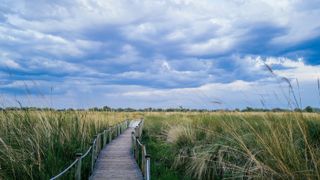
Image quality
The results from the Leica Q2 are technically excellent - sharp and detailed across the frame, or with sumptuously soft backgrounds when you want the subject to stand out. But that’s really only half the story: this is also a camera that encourages creativity.
Since the fixed lens prevents you zooming in for the predictable shot, you will be forced to slow down, think about composition and reframe your image around details you had originally not seen. Along with the wafer-thin depth of field, this process can imbue run-of-the mill scenes with atmosphere and artistry.

Conclusion
Leica has always ploughed its own furrow, less subject to the mundane constraints of practicality and value for money. In the Q2, it has created a camera that is much less mad than it might seem. Whether or not it represents value for money is an individual calculation, but it is certainly both practical and a pleasure to use.
Yes, it has its limitations, but treat them as a challenge and it will make you a better photographer - just as the restrictive rules of poetry encourage a writer to rise above the prosaic.

Leica Q2, £4,500, leica-camera.com
Create an account with the same email registered to your subscription to unlock access.
Sign up for Today's Best Articles in your inbox
A free daily email with the biggest news stories of the day – and the best features from TheWeek.com
Holden Frith is The Week’s digital director. He also makes regular appearances on “The Week Unwrapped”, speaking about subjects as diverse as vaccine development and bionic bomb-sniffing locusts. He joined The Week in 2013, spending five years editing the magazine’s website. Before that, he was deputy digital editor at The Sunday Times. He has also been TheTimes.co.uk’s technology editor and the launch editor of Wired magazine’s UK website. Holden has worked in journalism for nearly two decades, having started his professional career while completing an English literature degree at Cambridge University. He followed that with a master’s degree in journalism from Northwestern University in Chicago. A keen photographer, he also writes travel features whenever he gets the chance.
-
 Why au pairs might become a thing of the past
Why au pairs might become a thing of the pastUnder The Radar Brexit and wage ruling are threatening the 'mutually beneficial arrangement'
By Chas Newkey-Burden, The Week UK Published
-
 'A direct, protracted war with Israel is not something Iran is equipped to fight'
'A direct, protracted war with Israel is not something Iran is equipped to fight'Instant Opinion Opinion, comment and editorials of the day
By Harold Maass, The Week US Published
-
 Today's political cartoons - April 17, 2024
Today's political cartoons - April 17, 2024Cartoons Wednesday's cartoons - political anxiety, jury sorting hat, and more
By The Week US Published
-
 The Westbury Hotel review: stunning suites in charming Dublin
The Westbury Hotel review: stunning suites in charming DublinThe Week Recommends This hotel is the perfect spot to while away a weekend in Ireland's capital
By Kaye O'Doherty Published
-
 Drama movies 2024: new films out this year
Drama movies 2024: new films out this yearIn Depth Latest reviews include The Boys in the Boat, One Life and Tchaikovsky's Wife
By The Week UK Last updated
-
 Best new hotels and places to stay in 2024
Best new hotels and places to stay in 2024The Week Recommends Featuring stylish island resorts, historical properties and wilderness retreats
By The Week UK Last updated
-
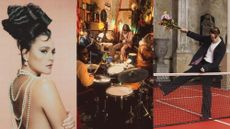 Albums of the year: best music of 2023
Albums of the year: best music of 2023The Week Recommends A look back at the best pop, rap, jazz, dance, classical and rock releases
By The Week UK Published
-
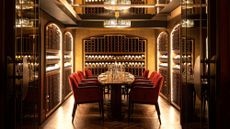 Savoy Grill by Gordon Ramsay review: an institution reinvented
Savoy Grill by Gordon Ramsay review: an institution reinventedThe Week Recommends Traditions are maintained and the tweaks are clever and modern
By Neil Davey Published
-
 Tulum: a Mexican beach town of 'two halves'
Tulum: a Mexican beach town of 'two halves'The Week Recommends With the 'pueblo' and 'Zona Hotelera', Tulum is home to great hotels, restaurants and beach clubs
By William Leigh Published
-
 La Zebra review: beach chic, perfect tacos and secret cenotes
La Zebra review: beach chic, perfect tacos and secret cenotesThe Week Recommends Enjoy a stylish stay in Mexico at this family-friendly beach hotel and restaurant
By William Leigh Published
-
 Atlantis Paradise Island Bahamas review: a mythical beachside resort
Atlantis Paradise Island Bahamas review: a mythical beachside resortThe Week Recommends Combine the classically simple pleasures of sun, sea and sand with upmarket fun and food
By Adrienne Wyper Published